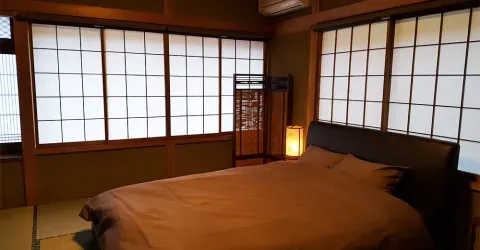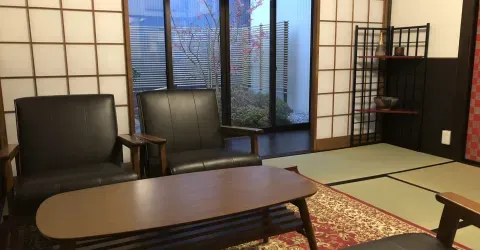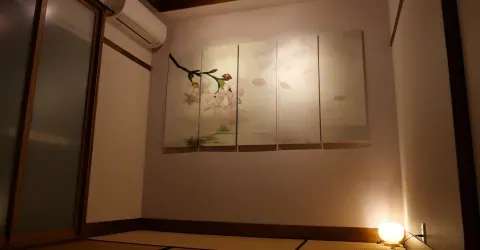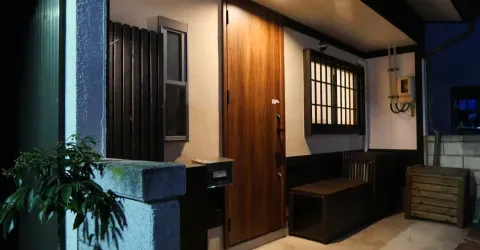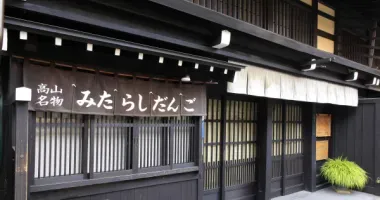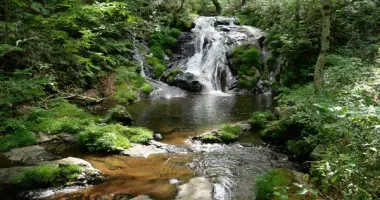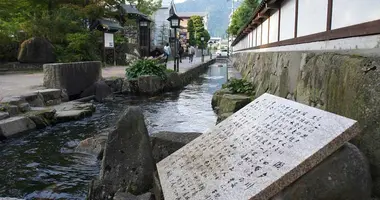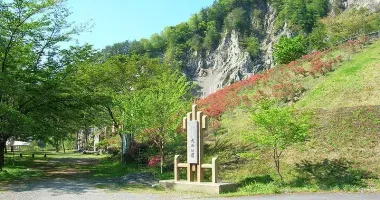Murodo Plateau: A breathtaking alpine wonderland in Japan's Northern Alps
- Published on : 07/06/2024
- by : Japan Experience
- Youtube
Nestled high in the Northern Japan Alps, the Murodo Plateau stands as a testament to nature's grandeur. At an elevation of 2,450 meters above sea level, this alpine paradise offers visitors a unique opportunity to experience Japan's most stunning mountain scenery. From towering snow walls in spring to vibrant alpine flora in summer, and fiery autumn colors to serene winter landscapes, Murodo captivates with its ever-changing beauty. As you step onto this plateau, you'll find yourself surrounded by majestic peaks, pristine lakes, and rare wildlife. Whether you're an avid hiker, nature photographer, or simply seeking a peaceful retreat, Murodo Plateau promises an unforgettable journey into the heart of Japan's alpine wilderness.
Discovering the natural wonders of Murodo Plateau
The Murodo Plateau is a treasure trove of natural wonders that will leave you in awe. As you explore this alpine playground, you'll encounter breathtaking landscapes at every turn. One of the most iconic features is Mikurigaike, a stunning crater lake formed by volcanic activity thousands of years ago. Its cobalt blue waters perfectly reflect the surrounding peaks, creating a mirror-like surface that's a photographer's dream. Nearby, you'll find the Jigokudani or "Hell Valley," where sulfuric hot springs and fumaroles create an otherworldly atmosphere reminiscent of a lunar landscape.
For those seeking panoramic views, a short hike to the Mt. Murodo viewpoint offers sweeping vistas of the Tateyama mountain range and the vast caldera below. On clear days, you might even catch a glimpse of the distant Mt. Fuji's Peak. The plateau is also home to unique alpine vegetation, including rare species that have adapted to the harsh mountain environment. As you wander along the well-maintained trails, keep an eye out for delicate alpine flowers that dot the landscape with vibrant colors during the warmer months.

Seasonal highlights and activities on Murodo Plateau
Each season brings its own charm to Murodo Plateau, offering visitors a diverse range of experiences throughout the year. In spring, typically from mid-April to June, the plateau comes alive with the famous Snow Wall or Yuki-no-Otani. This remarkable 20-meter high corridor of snow, carved through massive snowdrifts, attracts visitors from around the world. It's a surreal experience to walk between these towering walls of white, feeling dwarfed by nature's might.
As summer arrives, the snow recedes to reveal a carpet of colorful alpine flowers. This is the perfect time for hiking and nature walks, with trails suitable for all levels of experience. The warmer months also bring opportunities for stargazing, with the clear mountain air offering spectacular views of the night sky. Autumn paints the plateau in a riot of reds, oranges, and golds as the foliage changes color. This season offers some of the most picturesque views and is ideal for photography enthusiasts. In winter, while access is limited, the plateau transforms into a serene snowscape, popular among backcountry skiers and snowshoers who brave the challenging conditions.

The iconic Snow Wall and other winter attractions
The Snow Wall of Murodo Plateau is undoubtedly one of Japan's most impressive natural spectacles. Created each spring when the road to Murodo is cleared of winter snow, these walls can reach heights of up to 20 meters. Walking through this corridor of snow is an experience that truly puts into perspective the immense snowfall this region receives. The Snow Wall typically opens in mid-April and remains accessible until early June, gradually diminishing in height as temperatures rise.
Beyond the Snow Wall, winter on Murodo Plateau offers a range of unique attractions. The Mikurigaike Onsen, Japan's highest altitude hot spring, provides a surreal experience of soaking in warm waters while surrounded by snow-capped peaks. For the adventurous, backcountry skiing and snowshoeing opportunities abound, allowing visitors to explore the pristine winter landscape. The plateau also becomes a haven for winter wildlife watching, with chances to spot animals like the Japanese serow against the snowy backdrop. Even in the depths of winter, the Tateyama Ropeway continues to operate, offering breathtaking aerial views of the snow-covered alpine scenery.

Snow Wall, Murodo Plateau

Snow Wall, Murodo Plateau
Flora and fauna: Encountering the Japanese Rock Ptarmigan and alpine vegetation
Murodo Plateau is home to a diverse array of alpine flora and fauna, adapted to thrive in the harsh mountain environment. One of the most iconic residents is the Japanese Rock Ptarmigan, known locally as "raicho" or "thunderbird". This rare bird, considered a Special Natural Monument in Japan, can often be spotted on the plateau. With its changing plumage - white in winter and mottled brown in summer - the ptarmigan is a symbol of the changing seasons on Murodo.
The plateau's vegetation is equally fascinating, with many species found nowhere else in Japan. In summer, the landscape bursts into color with alpine flowers such as the Tateyama Fuji (a type of buttercup), Chinguruma (a delicate alpine flower), and various species of gentian. The creeping pine bushes that dot the plateau are not only picturesque but also provide essential shelter for wildlife. For plant enthusiasts, the Tateyama Caldera Sandbox Plant Garden near Murodo Station offers a chance to observe and learn about the unique alpine flora of the region. As you explore, remember that this delicate ecosystem is protected, and visitors are asked to stay on designated paths to preserve the natural habitat.

Japanese Rock Ptarmigan, Murodo Plateau
Hiking and trekking opportunities in the Murodo area
Murodo Plateau serves as an excellent base for hiking and trekking adventures in the Northern Japan Alps. The area offers a variety of trails suitable for different fitness levels and time constraints. For a leisurely walk, the Mikurigaike Pond Loop is a popular choice. This 1.7-kilometer trail circles the beautiful Mikurigaike crater lake, offering stunning views of Mt. Tateyama reflected in its waters. The walk takes about an hour and is suitable for most visitors.
More experienced hikers might opt for the challenging ascent of Mt. Tateyama itself. This sacred mountain, one of Japan's three holy mountains alongside Mt. Fuji and Mt. Haku, offers a rewarding climb with panoramic views from its 3,015-meter summit. The round trip from Murodo typically takes about 4-5 hours. For those seeking a multi-day adventure, the Tateyama-Kurobe Alpine Route allows hikers to traverse the entire mountain range, experiencing diverse landscapes and staying in mountain huts along the way. Whichever trail you choose, always check weather conditions, carry appropriate gear, and inform others of your plans before setting out.
Accommodation options and onsen experiences at high altitude
Despite its remote location, Murodo Plateau offers several accommodation options for those wishing to extend their stay in this alpine paradise. The most notable is Hotel Tateyama, Japan's highest-altitude hotel. Perched at 2,450 meters above sea level, it provides comfortable rooms with breathtaking mountain views. The hotel also houses restaurants serving both Japanese and Western cuisine, allowing guests to refuel after a day of exploration.
For a more traditional experience, the Mikurigaike Onsen offers both accommodation and the chance to soak in Japan's highest natural onsen hot spring. The onsen's indoor baths feature large windows that frame the stunning alpine scenery, creating a uniquely relaxing experience. Budget travelers can opt for the Murodo Sanso, a mountain hut that provides basic dormitory-style accommodations. Regardless of where you stay, spending a night on the plateau allows you to witness spectacular sunsets and sunrises, as well as enjoy stargazing under some of Japan's clearest night skies.

Accessing Murodo Plateau via the Tateyama Kurobe Alpine Route
The journey to Murodo Plateau is an adventure in itself, typically undertaken as part of the famous Kurobe Tateyama Kurobe Alpine Route. This unique transport system connects Toyama City in Toyama Prefecture with Omachi Town in Nagano Prefecture, traversing the Northern Japan Alps. To reach Murodo, most visitors start from either JR Toyama Station on the west side or Shinano-Omachi Station on the east.
From Toyama, the journey involves a series of transports: a train to Tateyama Station, followed by a cable car, and finally a bus that winds its way up to Murodo. Each leg of the journey offers its own spectacular views. The Alpine Route is typically open from mid-April to late November, with exact dates varying each year due to snow conditions. It's important to note that the route can get very busy, especially during peak seasons like Golden Week (late April to early May) and autumn foliage season. Advance booking for transportation and accommodation is highly recommended. Whether you're visiting for a day trip or a longer stay, the journey to Murodo Plateau promises to be as memorable as the destination itself.
